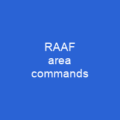The United States Space Force: A New Era in National Security
Imagine a world where the final frontier of space is not just a place for exploration but a critical battleground. That’s exactly what the United States Space Force (USSF) aims to achieve. Established on December 20, 2019, as part of the Department of the Air Force, the USSF has quickly become an integral component of our national security strategy.
The Birth and Mission of the USSF
How did we get here? The origins of the USSF trace back to military space programs during the Cold War. But it wasn’t until December 20, 2019, that this service officially became a reality. The mission of the USSF is clear: to secure the nation’s interests in, from, and to space. This involves providing freedom of operation, conducting space operations, protecting US interests, deterring aggression, ensuring prompt and sustained space operations, and securing our nation’s security in space.
The Leadership and Structure
At the helm is the chief of space operations, a four-star general who reports to the secretary of the Air Force. This leader provides military advice to civilian leadership at the Department of Defense and the White House, ensuring that the USSF remains aligned with broader national security objectives.
The Three Core Functions
Breaking down its mission into three core functions, the USSF focuses on:
- Space Superiority: Defending against space threats and protecting spacecraft in space or from attacks enabled by adversary spacecraft.
- Global Mission Operations: Integrating joint functions across domains from space to support air, land, and sea operations through early warning and communication.
- Assured Space Access: Ensuring the deployment and sustainment of equipment in outer space while controlling space debris to avoid collisions.
A Brief History of Military Space Forces
The idea of a separate service for space dates back to the 1960s. During World War II, identifying the importance of space, the U.S. Army, Navy, and Air Force each started their own separate space and rocket programs. The U.S. Air Force created the first military space organization in 1954 with the launch of Explorer 1 in 1958. Early military space efforts focused on weather, reconnaissance, surveillance, communications, and navigation.
During the Vietnam War, the U.S. military began using space forces for combat operations, supporting ground, sea, and air operations through satellite communications. The Persian Gulf War marked a significant turning point, with over 60 spacecraft providing 90% of theater communications and command and control for a multinational army of 500,000 troops.
The Establishment of the USSF
While the idea of a separate service for space originated in the 1960s, it wasn’t until President Trump endorsed creating a Space Force in 2018 that Congress passed legislation establishing it as a military service under the Air Force. The National Defense Authorization Act was signed into law on December 20, 2019, officially establishing the US Space Force as the sixth armed service.
The USSF gained new members in April and September 2020, including astronauts, and began building its culture and identity. However, it faced public relations challenges due to perceived ties to science fiction and President Trump. The service adopted a unique uniform design and seal, which sparked controversy over similarities with Star Trek.
The Organizational Structure
Organized into a headquarters staff that provides leadership and guidance for the force; field commands responsible for organizing, training, and equipping Guardians; deltas specialized by mission area; and squadrons specializing in acquisitions, cyberspace operations, engineering, intelligence, and space operations. The Space Force is led by the chief of space operations, who reports to the secretary of the Air Force.
The Three Field Commands
The USSF’s three field commands (FLDCOM) are purpose-built for specific activities, aligning with various institutional responsibilities to organize, train, and equip Guardians. Component field commands (C-FLDCOM) coordinate and integrate space forces into planning and current operations within unified combatant commands. Direct reporting units (DRU) provide new ideas or deep knowledge about highly specialized issues.
The Future of the USSF
As the United States Space Force matures, a separate military department will be created to be known as the Department of the Space Force. The service is currently organized as a service under the Department of the Air Force, with plans for it to become an independent department in the future.
The Uniform and Insignia
The primary uniform is the OCP Uniform, adopted from the US Air Force and US Army, while a distinctive blue and gray service dress uniform was unveiled in 2021. The Physical Training Uniform was also unveiled in 2021, with plans for availability by early 2024.
The Core Spacepower Disciplines
Officers are the leaders of the U.S. Space Force and plan operations, manage personnel, entering through three paths: Air Force Academy, Reserve Officer Training Corps, or Air Force Officer Training School. The academy has a long history in space programs and offers two space majors and 29 space courses.
The Enlisted Ranks
Enlisted members participate in and support operations by completing Basic Military Training at Joint Base San Antonio, which includes Space Force-specific curriculum. They are enrolled in the Community College of the Air Force and attend professional military education at the Forrest L. Vosler Non-Commissioned Officer Academy.
The USSF’s Modernization Efforts
The US Space Force is undergoing intensive modernization efforts, with a focus on improving its ability to track objects in space, provide energy, and support national security. The Deep Space Advanced Radar Capability (DARC) will track objects in geosynchronous orbit with three sites. A spacecraft called Oracle will demonstrate technologies for tracking objects outside of geosynchronous orbit and between Earth and the Moon. Arachne is a program demonstrating essential technologies for a prototype space-based solar power transmission system.
The Navigation Technology Satellite-3 (NTS-3) will test advanced techniques to detect and mitigate interference in positioning, navigation, and timing capabilities. The Space Force’s Rocket Cargo program aims to lease space launch services to transport military materiel to ports across the globe.
Conclusion
The United States Space Force is not just a new service but a critical component of our national security strategy. As we look towards the future, it will be essential for the USSF to continue its modernization efforts and ensure that space remains a domain where the United States can operate freely and securely.

You want to know more about United States Space Force?
This page is based on the article United States Space Force published in Wikipedia (retrieved on December 17, 2024) and was automatically summarized using artificial intelligence.






